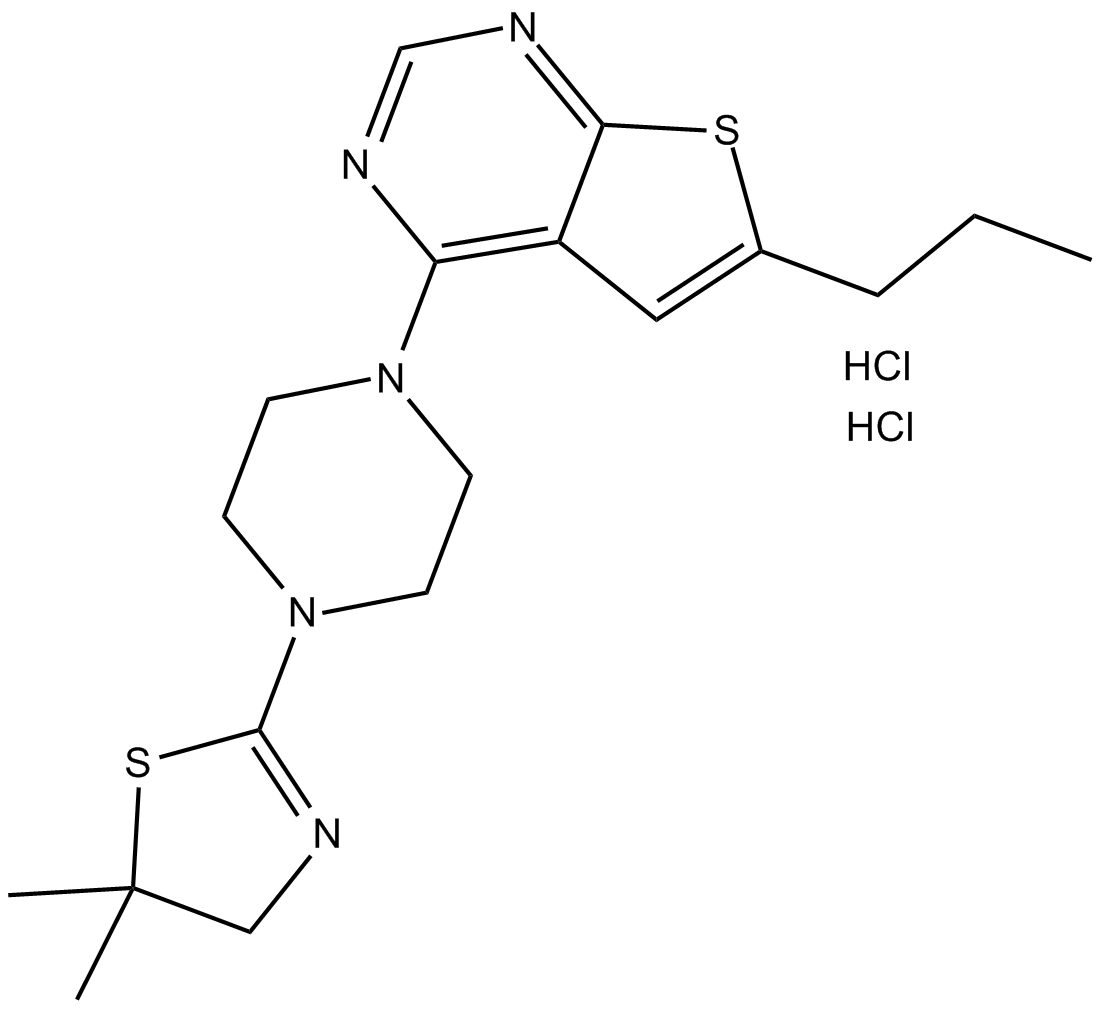MI-2 (hydrochloride) |
| Catalog No.GC10388 |
menin-MLL interaction inhibitor
Products are for research use only. Not for human use. We do not sell to patients.

Sample solution is provided at 25 µL, 10mM.
MI-2 (Menin-MLL Inhibitor) is a potent menin-MLL interaction inhibitor with an IC50 value of 446 ± 28 nM.
Menin is an oncogenic cofactor in leukemic transformations which could bind to the N-terminal fragment of MLL existed in all MLL fusion proteins. Menin is a highly specific and direct binding partner of MLL and MLL fusion proteins which is essential for regulation of their target genes. Disruption of the menin-MLL protein interaction abrogates oncogenic properties of MLL fusion proteins and blocks the development of acute leukemia [2].
In vitro: In HEK293 cells, MI-2 accessed the protein target menin-MLL and effectively inhibited the menin-MLL-AF9 interaction. MI-2 effectively blocked cell proliferation, and induced cell apoptosis in human MLL leukemia cell lines harboring different MLL translocations MLL-AF9 and MLL-ENL, with the GI50 value of about 5 μM for MI-2. MI-2 showed little effect on the cell growth of E2A-HLF transduced BMC with the GI50 of > 50 μM. MI-2 specifically reduced the immortalization potential of cells transformed with MLL fusion oncoproteins by downregulating the expression of target genes required for MLL fusion protein oncogenic activity [1].
In vivo: After 7 days treatment with MI-2, MLL-AF9 transformed BMC showed great morphology changes and the expression of CD11b was greatly increased [1].
References:
[1]. Grembecka J, He S, Shi A, et al. Menin-MLL inhibitors reverse oncogenic activity of MLL fusion proteins in leukemia[J]. Nature chemical biology, 2012, 8(3): 277-284.
[2]. Borkin D, He S, Miao H, et al. Pharmacologic inhibition of the Menin-MLL interaction blocks progression of MLL leukemia in vivo[J]. Cancer Cell, 2015, 27(4): 589-602.
Average Rating: 5 (Based on Reviews and 18 reference(s) in Google Scholar.)
GLPBIO products are for RESEARCH USE ONLY. Please make sure your review or question is research based.
Required fields are marked with *




















